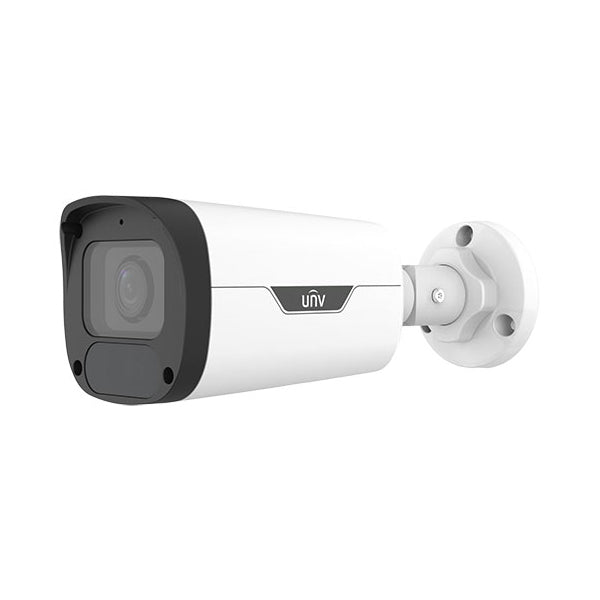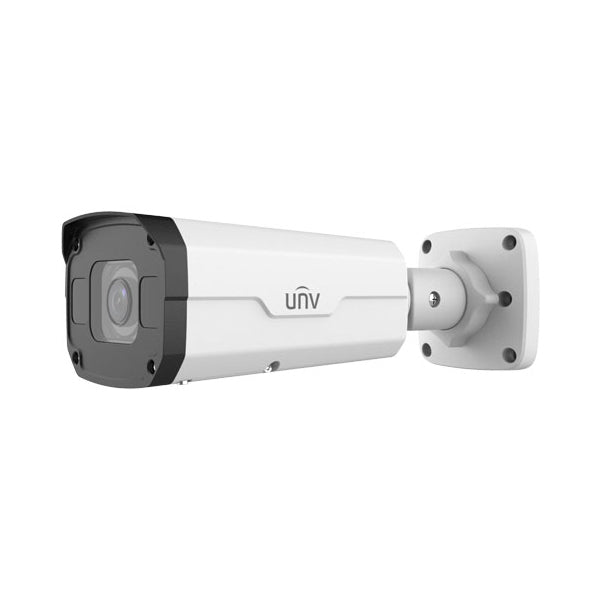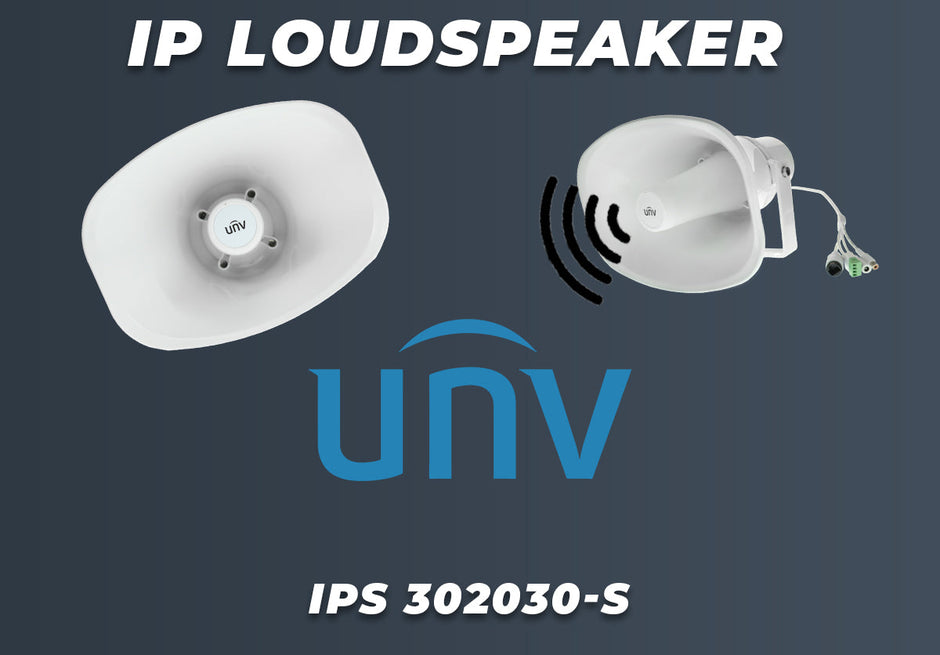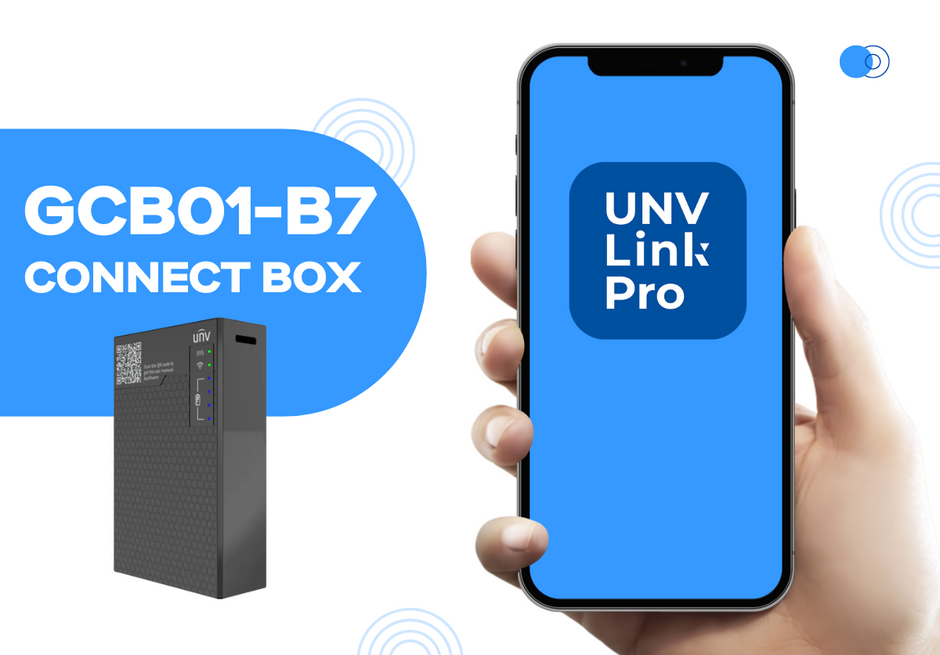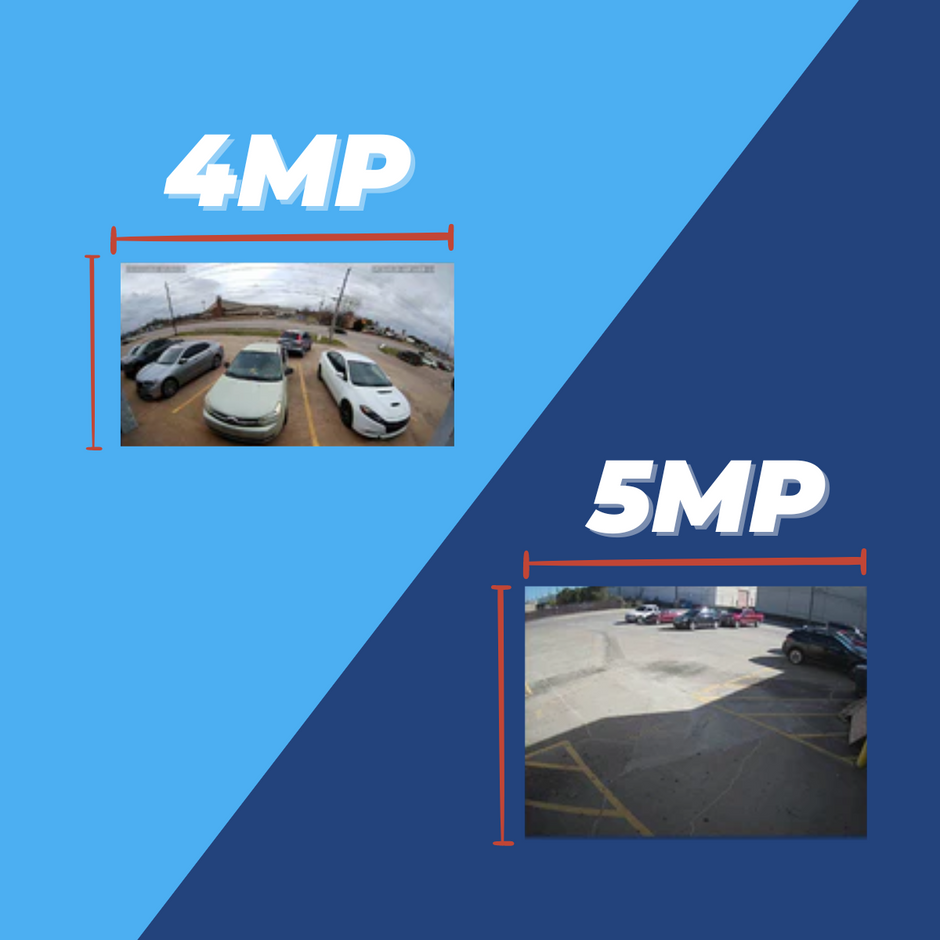In our last video series, we looked at the Uniview Fixed Lens security cameras. These cameras are incredible and powerful cameras, but with a few limitations. The most obvious limitation is that their lens is fixed at a given length, between 2.8mm and 4mm. They also have no edge storage on the camera, so you need an NVR to record video. And, except for the vandal dome models, there is no audio input. So if you're looking for something a little more powerful that does overcome these limitations, then the Uniview Motorized Lens Cameras are definitely worth your consideration.
Uniview's motorized lens cameras have fantastic zoom capabilities, responsive controls, a microSD card slot, audio inputs, and the turrets even have a built-in microphone. With all these features and more, there's a lot to learn about these cameras. So without further ado, we present to you our work-in-progress review of the Uniview Motorized Lens Security Cameras.
UNV Motorized Lens Cameras Overview and Specs
Resolution
All three cameras come in two resolutions: 4MP and 4K. Let's take a look at these options in a bit more detail.
The 4MP cameras shoot video at 2560 X 1440 pixels or 2592 x 1520 pixels. The main difference between the two resolutions is their aspect ratios. The 2560 X 1440 is the default resolution at 16:9, which is pretty typical. The 2592 x 1520 resolution has slightly more pixels (3,939,840 compared to 3,686,400). However, the aspect ratio is less standard at 1.71:1. At a resolution of 2560 X 1440, the camera shoots at 25 frames per second, which is pretty good. Video will appear relatively smooth. At 2592 x 1520, it can only record at 20 frames per second, which will be a bit choppier. If you want to record video at a smoother frame rate of 30FPS, you can knock your resolution down to 3MP or 2MP.
The 4K cameras shoot video at 8MP, or a resolution of 3840 x 2160 pixels. The frame rate at 4K is 20fps. However, if you lower the resolution to 5MP or 4MP, you can have up to 30 fps for very smooth video. If you take it down to 2MP (1080p), you can have a super smooth frame rate of up to 60fps. So these 4K cameras are very flexible, as you can choose between a high resolution or a high frame rate
Check out the video samples below to get a good idea of the differences between the two models when it comes to resolution and frame rate. Be sure to watch them at full screen and at the highest resolution for the best viewing experience.
Zoom Range
The main differentiating feature of these cameras is its abiblity to zoom its lens in and out. All six cameras have a zoom range of 2.8mm at their widest point to 12mm at their narrowest point, giving this optical lens a litlle more than a four times zoom factor.
While all four cameras have the same zoom range, the field of view differs depending on the resolution. The 4MP models are narrower on both sides of the zoom range. Zoomed out at 2.8mm, the 4MP cameras have a 91° field of view. Zoomed in at 12mm, the 4MP cameras have a 27° field of view. The 4K cameras are wider, with a field of view range of 114.8° - 47.3°.
This sounds like a pretty big difference, and it's definitely a noticeable one. But at the end of the day, it really doesn't change the image all that much. In the images below, you'll be able to compare and contrast the fields of view for the two resolutions.
IR Distance
These cameras offer incredible imagery day or night. All six cameras have a fantastic infrared range. The vandal domes and turrets can see in the dark for up to 98', while the bullet's IR lights extend up to 164'.
IP67 Weatherproof
These cameras are IP67 weatherproof, making them very durable. This means they are fully protected from dust and can withstand total immersion in three feet of water for up to thirty minutes, so you can rest assured knowing your cameras are capable of surviving the toughest of storms.
Unboxing the Uniview Motorized Lens Cameras
All three cameras come with mounting hardware, a drill template, and product documentation. Included in the documentation, you'll find your quick start guide, waterproofing guide, and product packing checklist. The motorized bullets and vandal domes also come with the hex wrench, which you'll use to adjust the angle of the bullet and remove the glass dome off of your vandal dome.
A Closer Look at the UNV Motorized Bullet

The motorized bullet is a nice and attractive optical lens camera, with a nice form factor and convenient angle-adjustment controls. While this camera does have a triple-axis adjustment, you'll only find two hex screws: loosening the top screw near the base allows the whole camera to swivel vertically and horizontally, while loosening the screw near the back of the camera housing allows the lens to rotate.
On the bottom of the camera housing, you'll find a small flap secured with two Phillips-head screws. Opening this compartment gives you access to a MicroSD card slot. It also gives you access to the optical lens, allowing you to manually zoom the lens in and out using a textured wheel. Since this compartment has access to the inner workings of your camera, you'll want to be careful as you close it back. Make sure the seal is secure around the opening and the screws are nice and tight.


In the pigtail, you'll find your RJ45 Ethernet connection, your 12v DC power connection, and alarm and audio in/out connections. On the 4K motorized bullet, there is also a BNC video out connection, which you can use to connect your camera directly to a spot monitor without going through the network.
A Closer Look at the UNV Motorized Vandal Dome

This is a powerful and compact camera with an IK10 vandalproof glass dome. Its toughness and durability makes this camera a prime candidate for any large commercial or enterprise installation. While it doesn't come with a true integrated junction box, there is a large screw on the outside of the camera's housing that you can remove in order to route your cables out the side of the camera if you need to.
In terms of cables, this camera does split its cables up into two separate pigtails. In one pigtail you'll find your RJ45 Ethernet connection and your 12V DC connection. The other pigtail contains your audio in/out, your alarm in/out, and a BNC video out connection. Unlike the bullet, both the 4K and 4MP models include the BNC video out. Having the cords separated into two separate pigtails does make the connection interface a little bit cleaner and more organized.

Under the dome, you'll find a slot for a MicroSD card and a reset button. Like the bullet, you'll also have access to the lens zoom allowing you to manually zoom your camera in and out. To adjust your lens, you can move it up and down. But you may need to loosen the tension screws in order to twist your lens around.


A Closer Look at the UNV Motorized Turret

The power and function of a bullet meets the compact durability of a vandal dome in this beautiful motorized lens turret camera. It comes apart into three pieces for installation: the mounting base, the "eyeball" camera, and the hood that holds the camera into place. To take apart the camera, simply use a flat-head screwdriver to loosen the tension screw and twist the hood into the "unlocked" position.



This camera has the simplest pigtail of the three cameras, with only an Ethernet connection and a 12V DC connection. That said, you don't need an audio out connection with these cameras because, as we mentioned at the beginning of this post, these cameras come a built-in microphone!
That's right, you can enjoy audio from these cameras straight out of the box with no additional supplies, thanks to the built-in surveillance mic, which you can find right next to the lens.
Like the bullet camera, the turret also has a tiny comparment secured with Phillips-head screws. Inside the compartment, you'll find a reset button and a slot for a MicroSD card slot. However, unlike with the bullet camera, the turret's compartment does not give you open access to the zoom lens.


Installation and IP Network Setup
Installing your motorized lens security cameras is as simple as placing your drill template, drilling your holes, and fixing your camera into place using the mounting hardware. You have a couple of choices when it comes to the cables. You can drill a hole underneath the camera and run your cables through the ceiling, or you route the cables out the side of your camera. If you do the latter, make sure you use the included weatherproof grommet to ensure your cable connections are totally sealed from the elements.



Once your cameras are installed, it's time to set these up on the network. There are three options you can follow, which I'll list out here from most complex to simplest.
The Most Complex Method: Connect Your Camera to Your Router
You can connect your camera to your network simply by running an Ethernet cable from the camera to your Internet router or a standard switch. The pro here is that you can use the equipment that you already have available without investing in another switch. However, a standard switch will only connect your camera to your network. It won't be enough to power your camera. So if you take this route, you'll need to run a separate 12v DC power cable to your camera. Once you power your camera and connect it to your network, you're ready to move onto the next step: logging into your camera's interface.



The Middle Ground: Connect Your Camera to a Power Over Ethernet Switch
You can get by with running only one Ethernet cable to your camera and nothing else. However, in order for your Ethernet cable to both power your camera and connect it to the network, you'll need to plug the cable into a Power over Ethernet (PoE) switch. The obvious pro here is that you'll only have to run one cable to your camera. However, you will need to invest in a separate switch to make this happen. The good news is we sell IPCamPower switches, made specifically for IP security camera systems. You can get a simple single channel injector for something like $15. It's totally worth it for not having to run a separate power cable to your security camera. Once you connect your camera to the PoE switch, you're good to move onto the next step.


Logging Into Your Camera's Interface
If you set up your camera using one of the above methods, all that's left to do is log into your camera's interface. To do this, download and run the free EZTools program. This will show you all Uniview cameras on your network. (Heads up: if you have any H-Series cameras on your network, it'll show these, too. So be sure to look for the Uniview model numbers.) Once you find your camera in the list of devices, type the IP address into your web browser. Log in with the default username (admin) and password (123456). If this is your first time launching a Uniview web browser, you'll be prompted to download and install the web plugin. After you install the plugin and accept the terms and agreements, your camera's live view should pop right up. And that's it! Your cameras are now good to go.
The Simplest Method: Connect Your Camera to a Uniview NVR
If you have a Uniview NVR, the simplest way to get up and running with your Uniview security camera is to plug it into the NVR's integrated PoE switch. Connect the camera, allow it to boot up, and you'll see your video displayed on your NVR's monitor without any further action from you. This instant plug-and-play method is the fastest and simplest way to set up your Uniview security camera.


Check out the installation and setup portion of the video below!
Using Your Uniview Motorized Lens Security Camera
Once you've set up your camera and you're logged in, it's time to get everything configured and optimized for surveillance. In this section of the blog, we'll take a look at the web browser, walk you through some basic settings, and set up some recording events.
Zoom Controls
The first thing you'll want to do after installing your camera is adjust the zoom. Zooming your motorized lens camera is fast and simple. You can do this directly from the live view on the web interface or from the EZView mobile application. In any case, the zoom controls are instant and responsive. Once you stop zooming, the camera's autofocus is fast and accurate. If you do still need to adjust the focus, you can do that from the web or mobile interface as well. However, you probably won't need to.Web Interface Overview
If you've ever used our H-Series line of surveillance equipment, a lot of this is going to be pretty familiar to you. However, there are a few new things that you'll notice about this interface. If you're brand new to the world of CCTV, you might be a little overwhelmed at first with all the menus and options available to you. However, the Uniview interface is set up in such a way that, whether or not you know what you're doing, you can get a pretty good feel for the layout in a short amount of time.
The first thing to note is that there are a lot of options here. Way more than we can go over in one blog post or video. So, if you're a tinkerer, there's a lot for you to explore here. However, if you're not a tinkerer, that's okay too. The interface is laid out in such a way that you can find exactly what you're looking for, change the setting that you need, and get back to whatever it was you were doing before. This is the beauty of Uniview. It's complex enough to keep advanced users happy and it's organized and approachable enough for anyone to figure out.
Check out the screenshots below to get a feel for the menu system. You can click them to see the full size images. Following the images is our Web Interface overview, walking you through the basic settings and menu items.
Basic and Smart Events
One of Uniview's strongest features is the amount of basic and intelligent events available to you. For the motorized lens cameras, basic events include...
- Motion detection (based on a grid or area)
- Tampering detection
- Audio detection
- Alarm Input/Output (bullets and vandal domes)
Uniview's intelligent events include...
- Cross Line
- Enter Area (turrets and vandal domes)
- Leave Area (turrets and vandal domes)
- Intrusion
- Object Removed
- Object Left Behind
- Defocus
- Scene Change
- Face
- People Counting
To see a demonstration of some of these events, check out the video below. If you'd like to learn more details, keep an eye out for future blog posts focusing specifically on some of these intelligent events, including people counting and face detection.
Face Detection
I do have a quick note to make about face detection. In order to detect faces, these cameras do have to be pretty close. If you watch the video below, you'll see that I struggled setting up face detection for our turret outside simply because the faces were too far away. So if you want to install a camera specifically for face detection, be sure to install it eye level in a place where it will be able to clearly see faces.
These motorized lens security cameras are ideal for face detection cameras, simply because you can utilize the zoom lens to get closer to peoples' faces without having to install the camera super close to the flow of foot traffic.
Watch the video below for a quick preview of four face detection snapshots and video taken with the 4MP motorized bullet. Be sure to watch it fullscreen at 1440p for the best viewing experience
Final Thoughts
So, now that you know everything you need to know in order to make an informed decision, which camera are you going to go with? Do you prefer the motorized bullet? Dome? Turret? Let us know what you think in the comments below. If you have one of these cameras, be sure to leave your own review on the product page. Follow us across social media and subscribe to our email newsetter so you don't miss our next blog post. You can find links to our social media profiles and a form to subscribe to our newsletter by clicking here. If you have any remaining questions about the Uniview motorized lens security cameras, feel free to contact us anytime!





















